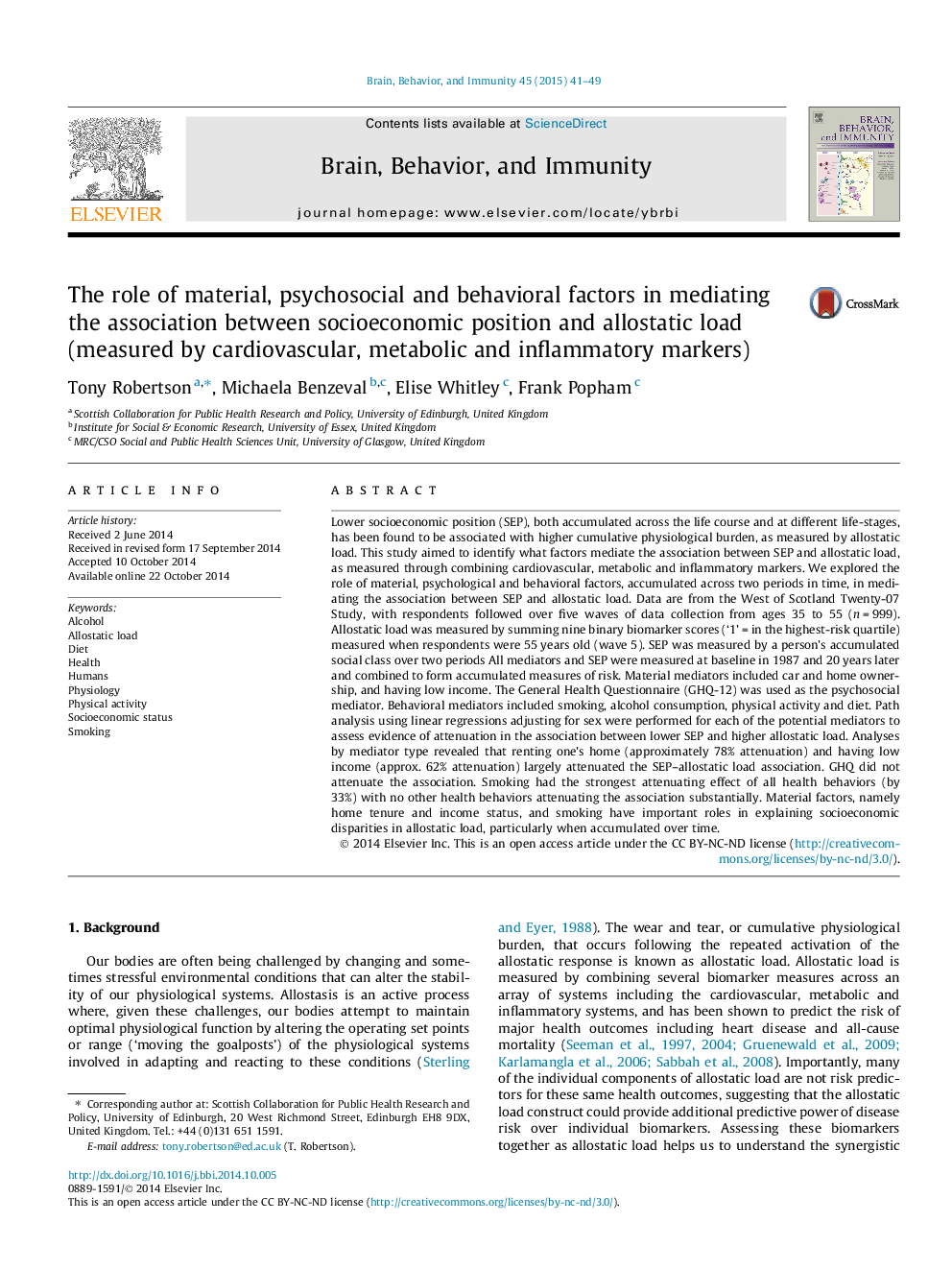| کد مقاله | کد نشریه | سال انتشار | مقاله انگلیسی | نسخه تمام متن |
|---|---|---|---|---|
| 7281182 | 1473922 | 2015 | 9 صفحه PDF | دانلود رایگان |
عنوان انگلیسی مقاله ISI
The role of material, psychosocial and behavioral factors in mediating the association between socioeconomic position and allostatic load (measured by cardiovascular, metabolic and inflammatory markers)
ترجمه فارسی عنوان
نقش عوامل مادی، روانی-اجتماعی و رفتاری در میان سازی رابطه وضعیت اجتماعی-اقتصادی و بارهای آلوزاتیک (با اندازه گیری نشانگرهای قلب و عروق، متابولیک و التهابی)
دانلود مقاله + سفارش ترجمه
دانلود مقاله ISI انگلیسی
رایگان برای ایرانیان
کلمات کلیدی
موضوعات مرتبط
علوم زیستی و بیوفناوری
ایمنی شناسی و میکروب شناسی
ایمونولوژی
چکیده انگلیسی
Lower socioeconomic position (SEP), both accumulated across the life course and at different life-stages, has been found to be associated with higher cumulative physiological burden, as measured by allostatic load. This study aimed to identify what factors mediate the association between SEP and allostatic load, as measured through combining cardiovascular, metabolic and inflammatory markers. We explored the role of material, psychological and behavioral factors, accumulated across two periods in time, in mediating the association between SEP and allostatic load. Data are from the West of Scotland Twenty-07 Study, with respondents followed over five waves of data collection from ages 35 to 55 (n = 999). Allostatic load was measured by summing nine binary biomarker scores ('1' = in the highest-risk quartile) measured when respondents were 55 years old (wave 5). SEP was measured by a person's accumulated social class over two periods All mediators and SEP were measured at baseline in 1987 and 20 years later and combined to form accumulated measures of risk. Material mediators included car and home ownership, and having low income. The General Health Questionnaire (GHQ-12) was used as the psychosocial mediator. Behavioral mediators included smoking, alcohol consumption, physical activity and diet. Path analysis using linear regressions adjusting for sex were performed for each of the potential mediators to assess evidence of attenuation in the association between lower SEP and higher allostatic load. Analyses by mediator type revealed that renting one's home (approximately 78% attenuation) and having low income (approx. 62% attenuation) largely attenuated the SEP-allostatic load association. GHQ did not attenuate the association. Smoking had the strongest attenuating effect of all health behaviors (by 33%) with no other health behaviors attenuating the association substantially. Material factors, namely home tenure and income status, and smoking have important roles in explaining socioeconomic disparities in allostatic load, particularly when accumulated over time.
ناشر
Database: Elsevier - ScienceDirect (ساینس دایرکت)
Journal: Brain, Behavior, and Immunity - Volume 45, March 2015, Pages 41-49
Journal: Brain, Behavior, and Immunity - Volume 45, March 2015, Pages 41-49
نویسندگان
Tony Robertson, Michaela Benzeval, Elise Whitley, Frank Popham,
